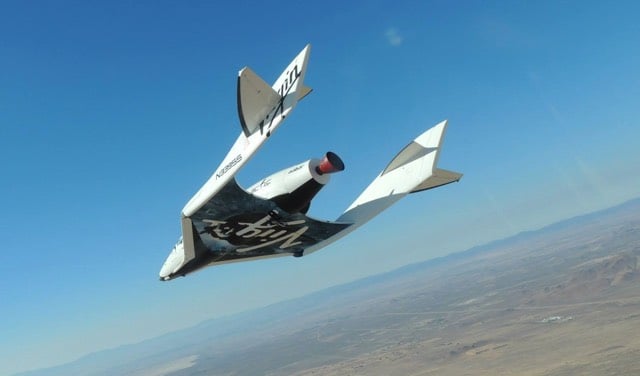Flying with Virgin Galactic

From Vanity Fair’s William Langewiesche, who has written extensively on the aviation industry and is a pilot himself, a detailed account of what happens during a space flight on Richard Branson’s Virgin Galactic.
Accelerating through Mach 0.95, the aircraft wobbles as shock waves develop on its wings and tails. This is known as a burble, and it marks the entry into supersonic flight. The shock waves change the airflow over the conventional control surfaces — the elevons — and render them almost useless, forcing the pilot in supersonic flight to fly entirely by trimming the stabilizers on the tail. Flying by trim is difficult to do well, but with pilots like these the passengers probably don’t need to worry. At Mach 1, the pilot rolls the pitch trim aft to a pre-determined position, and the spaceship responds by bending the flight path upward at a rate that pushes the passengers straight down into their seats with a force of 2.5 Gs. The passengers are now experiencing a total of 5.5 Gs, divided between two distinct vectors, and are rotated onto their backs as the spaceship accelerates ever more steeply upward. As they approach the vertical, nearing Mach 2, the pilot rolls the trim forward to capture the position, and 2.5 Gs are stripped away. Pointing straight up, the ship rockets into air growing so thin that the aerodynamic speeds decrease rapidly even as the ship keeps accelerating through Mach 3. At around that time, after about one minute of burn, and when an onboard instrument shows that the vehicle has sufficient energy to follow a ballistic path into space, the pilots shut down the rocket motor. The effect for the passengers, who are lying on their backs, facing straight up, is to go immediately from a condition of three Gs to the zero-G state called weightlessness.





Stay Connected